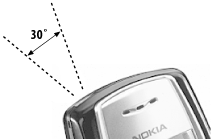Chapter 8. Infrared
| < Day Day Up > |
| Infrared is a legacy technology that won't die any time soon. Sure, it has lousy range and can be a hassle to set up, but sometimes, it's the only common communications medium between your Linux box and something you want to talk to. If you have ever used a remote control, you have used infrared technology. Infrared is a wireless communication technology that makes use of the invisible spectrum of light that is just beyond red in the visible spectrum. It's suitable for applications that require short-range, point-to-point data transfer. Because it uses light, line of sight is a prerequisite for using infrared. Despite this limitation, infrared is widely used in household equipment and is increasingly popular in devices such as digital cameras , PDAs, and notebook computers. Founded in 1993 as a nonprofit organization, the Infrared Data Association (IrDA) is an international organization that creates and promotes interoperable, low-cost infrared data interconnection standards that allow users to transfer data from one device to another. The Infrared Data Association standards support a broad range of appliances, computing, and communications devices.
There are currently four versions of IrDA; their differences are mainly in the transfer speed:
When two devices with two different IrDA implementations communicate, one steps down to the lower transfer speed. In terms of operating range, infrared devices can communicate up to one or two meters . Depending on the implementation, if a device uses a lower power version, the range can be stepped down to a mere 20 to 30 cm. This is crucial for low-power devices. A Cyclic Redundancy Check (CRC), which uses a number derived from the transmitted data to verify its integrity, protects all exchanged data packets. CRC-16 is used for speeds up to 1.152 Mbps, and CRC-32 is used for speeds up to 4 Mbps. The IrDA also defines a bi-directional communication for infrared communications. An infrared connection operates at a range of 0 to 1 meter, with peak intensity within a 30-degree cone (see Figure 8-1). With more power, a longer operating range is possible with a reduction in transfer speed. In addition, an infrared connection requires a visual line of sight in order to work, so there cannot be any direct obstruction between the two communicating devices. Figure 8-1. The 30-degree cone for peak power intensity of an infrared port Setting up Infrared with Linux can be tricky. Jean Tourrilhes's Linux-IrDA Quick Tutorial (http://www.hpl.hp.com/personal/Jean_Tourrilhes/IrDA/IrDA.html) lists 24 common pitfalls that await the unsuspecting user . If your hardware supports SIR mode, this is usually straightforward. FIR configuration is still somewhat arcane, unless you have a system that's supported right out of the box. Most modern notebooks support FIR by default, but you can often go into the BIOS setup and change it to SIR. Even if you want FIR to work, be sure to try SIR first, because it's usually the simplest. |
| < Day Day Up > |
EAN: 2147483647
Pages: 100
